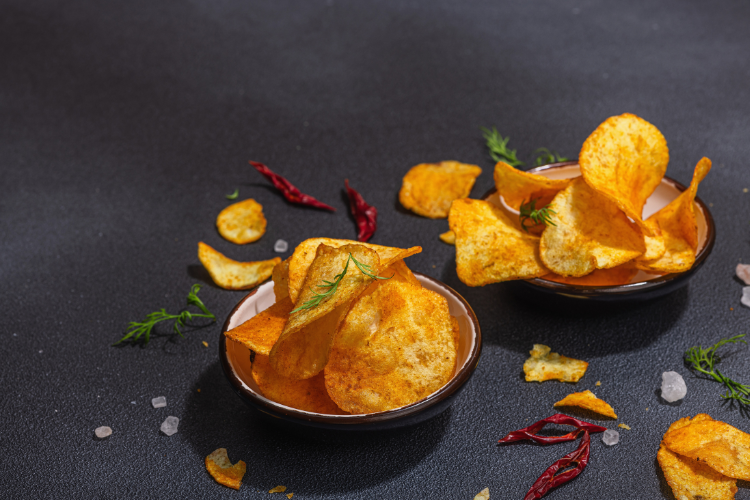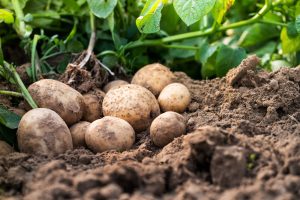
Low Carbon Crisps
Blog by Lan Fung Lam (Hera), Yr2 BSc Medical Biochemistry.
Ever wondered about the environmental cost of that satisfying crunch when you munch on your favourite packet of crisps? Brace yourselves – it’s higher than you might think. Producing a mere kilogram of these beloved snacks releases 2.8 kilograms of carbon dioxide equivalent (CO2 eq) into the atmosphere.
The carbon footprint comes from two main sources:
- The use of anaerobic digesters in processing food waste (oil, potatoes peels and other ingredients used to flavour crisps): in the presence of oxygen, microorganisms degrade food waste, releasing large amounts of methane and CO2 as byproducts. It is not all bad though as these digesters can produce~ 300 kWh of energy /per ton digested.
- The production of fertilisers used to grow potatoes. These are made using the Haber Process, which produces large amounts of CO2 as a byproduct while also requiring a large energy input.
Now, for the big question – how do we solve this problem? For this, CCm Technologies, a UK clean tech company established in 2011 and based in Swindon, turns to an unexpected source: waste. Specifically, they combined CO2 with ammonia (or phosphates) and organic fibres found in waste and turned them into low carbon and resource-efficient fertiliser pellets. Here’s how it works:
- Ammonia is extracted from urine, sewage sludge, and runoff from industrial and agricultural processes.
- Ammonia is combined with CO2 released from anaerobic digesters under high heat to form ammonium bicarbonate. The heat is a byproduct from the digester.
- Ammonium bicarbonate forms the foundation for the low carbon pellets
- Additional fibrous material from the anaerobic digester by-product “cakes” is incorporated into the pellets to enhance nutrient content. For crisps, the ‘cake’ will contain mostly potato fibres, but it can also come from treated sewage sludge, cattle slurries and chicken litter.
The benefits of these new pellets are clear – they keep CO2 away from the atmosphere while producing the same yield as conventional fertilisers. At the consumer level, CCm partnered with PepsiCo and used these pellets to make low carbon potato crisps – with a 70% reduction in CO2 emission per potato!
 What’s more, CCm fertiliser doesn’t just stop at reducing carbon emissions; it actively improves soil health by sequestering organic carbon into the soil, thereby preventing soil erosion. Around one tonne of CO2 is sequestered per tonne of fertiliser, and this stored carbon remains in the soil for at least 20 years, bolstering soil structure, permeability, and biodiversity and ultimately boosting yield.
What’s more, CCm fertiliser doesn’t just stop at reducing carbon emissions; it actively improves soil health by sequestering organic carbon into the soil, thereby preventing soil erosion. Around one tonne of CO2 is sequestered per tonne of fertiliser, and this stored carbon remains in the soil for at least 20 years, bolstering soil structure, permeability, and biodiversity and ultimately boosting yield.
With this technology, the agricultural sector can be reshaped to produce many more low carbon food products, not just limited to crisps. For now, as we indulge in our favourite snack, remember that even the humble crisp can contribute to a greener, more sustainable future.
Read the original article from CCm Technologies and it’s presentation to parliament in Dec 2022.
The content discussed in this article aligns with the United Nations Sustainable Development Goal: Responsible consumption and production (12).
Sign up to receive the FBMH ES newsletter by contacting srbmh@manchester.ac.uk. Read our previous editions: June and October 2023
To find out more about Environmental Sustainability: visit the Faculty’s intranet page, website or contact srbmh@manchester.ac.uk . For more information on Environmental Sustainability at the University watch this short film or visit their website.

0 Comments